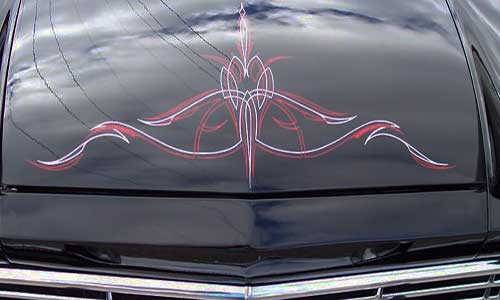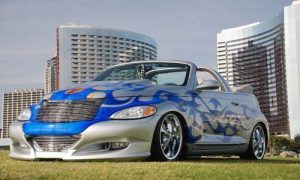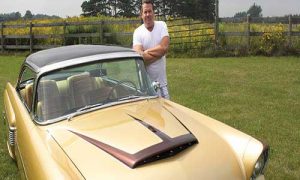By Mike Davey 2015-06-05
Pinstriping takes talent, patience, and an artistic flair.
For Danno Drouin, the road to becoming a professional pinstriper started with a passion for art. Drouin is the proprietor of Danno’s Black Heart Designs in Brantford, Ontario. “One of my first memories is trying to draw something I’d seen with my crayons. As far back as I could remember, I knew I was going to be an artist,” says Drouin, who describes himself as a bit of a reckless youth. “Luckily, I got into art school, and that started to curb some of my impulses.”
While at art school, Drouin discovered sign painting, and the rest was history.
“I found I had a gift for that sort of art,” says Drouin. Seeing Drouin at work you can begin to see why he might have an affinity for the automotive side of the business. He’s a huge fan of Alice Cooper, and tattoos cover his arms. The connection between kustom kulture and rock music has been firmly entrenched since at least the 1950s, when both started to emerge as pop art forms.


The goal of pinstriping is to enhance the curves of the surface, and the lines are generally of complementary colours. The technology used by contemporary stripers has changed little since the ‘50s. Mack still makes brushes the same way they did when Andrew Mack started the company, although their product line has expanded considerably. While stripers such as Lyle Fisk, Von Dutch (Kenny Howard) and Ed “Big Daddy” Roth are possibly the best known early practitioners of modern pin striping, many of those early stripers cite Tommy “The Greek” Hrones and Dean Jeffries as their major influences. Today, countless brush artists carry on those traditions.



























